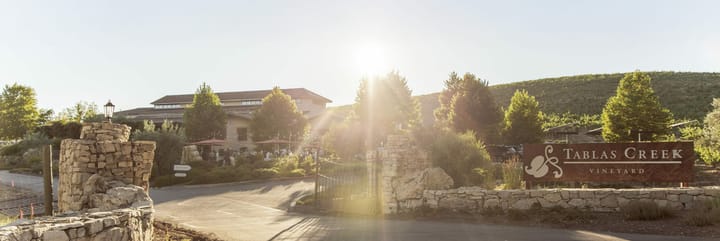Why the future may look a lot like the crazy 2015 vintage
I was honored to be invited to give the keynote address at today's Vintage Report Conference here in Paso Robles.
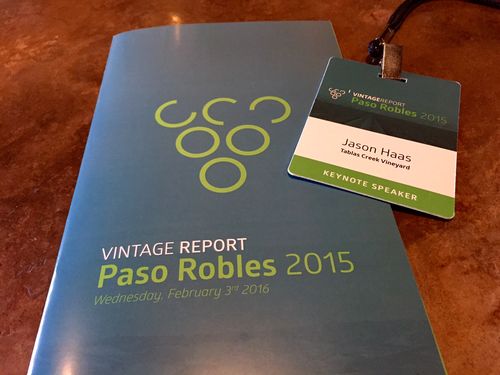
The topic was to provide an overview of the 2015 vintage, with technical discussions to follow on the vintage's impact on vine physiology, grapevine maturation, and berry/wine composition. I thought that my keynote address might be interesting to followers of the blog, and have shared it below. I have added a few concluding thoughts at the end.
I’m sure I don’t need to tell any of you that the 2015 vintage was unusual, or that most of what made it unusual presented challenges to viticulture throughout much of California. Nor am I likely to surprise any of you who experienced it with the roller-coaster of emotions that we saw out at Tablas Creek. This roller-coaster, in order:
You’ll get details of all these pieces from the many speakers here today, but I wanted to illustrate in two ways just how unusual the year was.
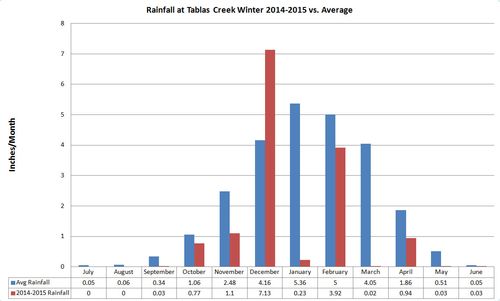
- Second, the ricochets between significantly warmer than average and significantly cooler than average months during the growing season. Only June was within 10% of normal heat accumulation, and some months like May, August, and October were way off the charts.
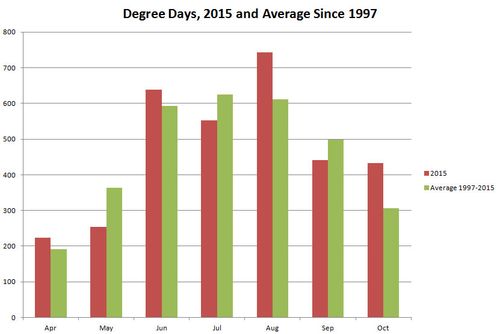
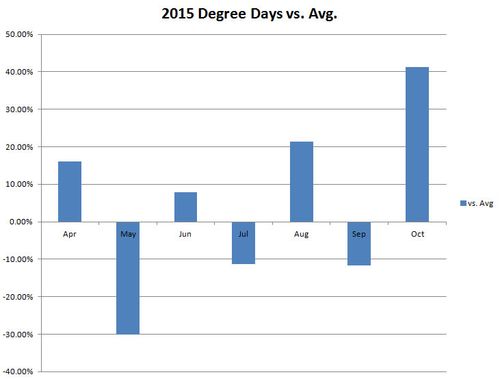
And yet, with all this uncertainty as a background, it’s looking like 2015 produced some remarkably compelling wines.
The lessons from 2015 may well prove to be important ones moving forward. The scientific consensus seems to be settling around the likelihood that droughts and extreme weather in our area are going to be more common in coming years thanks to global warming. The lessons we might learn from 2015, as unusual as it looks in historical context, may well need to be applied with increasing frequency in the future.
A few conclusions
It was interesting to me, in the research I did to put together this talk, the degree to which a consensus really seems to be building among the California wine community on the effects of climate change. Droughts are likely to become more frequent and more severe. The incidence of very warm stretches will increase, but so too will the threats from springtime frosts, as warmer March weather encourages earlier budbreak. The climate of the California's Central Coast will increasingly resemble, in rainfall and temperature, that of Southern California. And the increased frequency and intensity of tropical storms will make unusual summer rain events like the one we received last July more common.
A salient conclusion that Dr. Thibaut Scholasch, the organizer of the conference, made in his introduction was that the viticultural impacts we are likely to face more often given climate change (excessive drought, excessive heat) are more easily addressed by changes in viticulture and winemaking, as opposed to the opposite threats (excessive moisture, excessive cool) that put the success of a vintage largely outside of the control of a grower or winemaker.
Finally, I love that this high profile technical event, which takes place in four places around the world, has chosen Paso Robles as one of its four locations (joining Napa, Bordeaux, and Narbonne).

